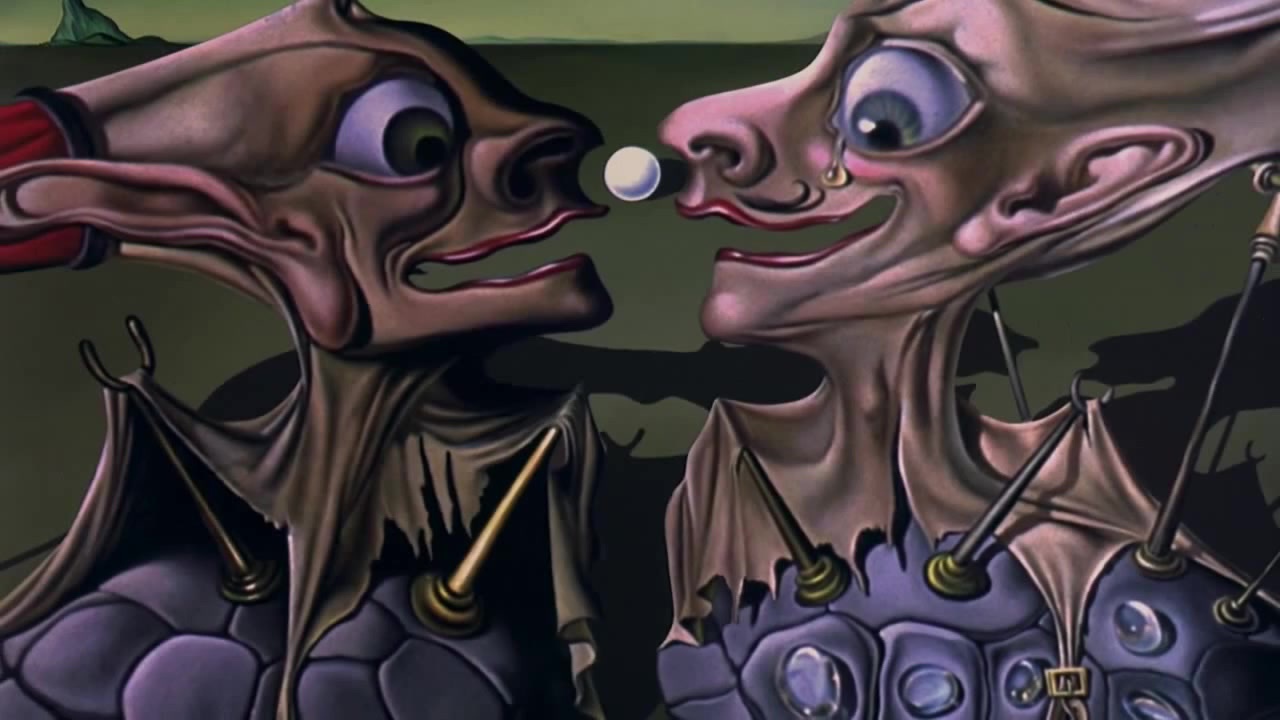
Once, in a Paris Café, a group of surrealist artist lead by André Breton was reunited, they had concealed and came to a decision – they had decided to expel Salvador Dalí from the surrealist movement. Many argue that this was due to the artist’s neutral political positions (since surrealist artist had begun embracing leftist ideas), others say that this was due to the changes in the artist’s own style. Whatever the reasons were, Dalí’s answer is even more memorable “I myself am surrealism.”
In later words, the painter explained “Surrealism (…) served to give experimental proof that total sterility and attempts at automatizations have gone too far and have led to a totalitarian system. (…) Today’s laziness and the total lack of technique have reached their paroxysm in the psychological signification of the current use of the college.”
Salvador Dalí was born in Figueres, Spain and from an early age the future highly influential artist displayed a certain exceptionality in behavior, in style, methods and ideas, which characterizes the choices he made throughout his life – unique.
When taken to his late brother’s grave at the age of five, Dalí claimed to be his brother’s reincarnation. And after being expelled from the Real Academia de Bellas Artes de San Fernando, he became acquainted with artists like Pablo Picasso or Joan Miró and grew a Diego Velázquez like moustache.
His style is characterized by the incorporation of different elements and influences from different artistic currents and art forms. From the Dada Movement, to drugs, the writings of Sigmund Freud or the methods of classical painters like Raphael or Vermeer, Dalí used different techniques – of coloring, of framing, different textures and materials – in order to illustrate his explorations of the human subconscious.
His most influential and celebrated works were produced from a golden era that spanned from 1929 to 1937. During this time Dalí’s presence touched several artistic fields notably painting (“The Persistence of Memory” in 1931), film (“Un Chien Andalou” in 1928 or “L’Âge d’or” in 1930) and sculpture (“The Lobster Telephone” in 1936 or “Mae West Lips Sofa” in 1937).
However, as World War II unfolded in Europe, Dalí and his long time muse/wife, Gala, retreated to the United States where they lived from 1940 to 1955. During this time in America, the artist designed theatre and film settings, as well as, interiors for luxury shops, jewelry.
Upon returning to Europe, Dalí resumed painting often producing works related to religious themes simultaneously inspired by the atomic age in which he was leaving. His growing interest in science, particularly mathematics and his incorporation of new techniques related with negative space, trompe l’oeil and optical illusions also had a great influence in his works.
Which artists like Andy Warhol claimed influential and important in the birth of pop art (claims helped by the fact that Dalí himself designed the Chupa Chups logo in 1969).
In 1982, Gala Dalí died and this event took much of Dalí’s energy and will to live away, he announced as his last painting 1983’s “The Swallow’s Tail” and resigned the artistic world. On a morning in 1989, he died while listening to Wagner’s “Tristan und Isolde”.
1. Un Chien Andalou (1929, Luis Buñuel)
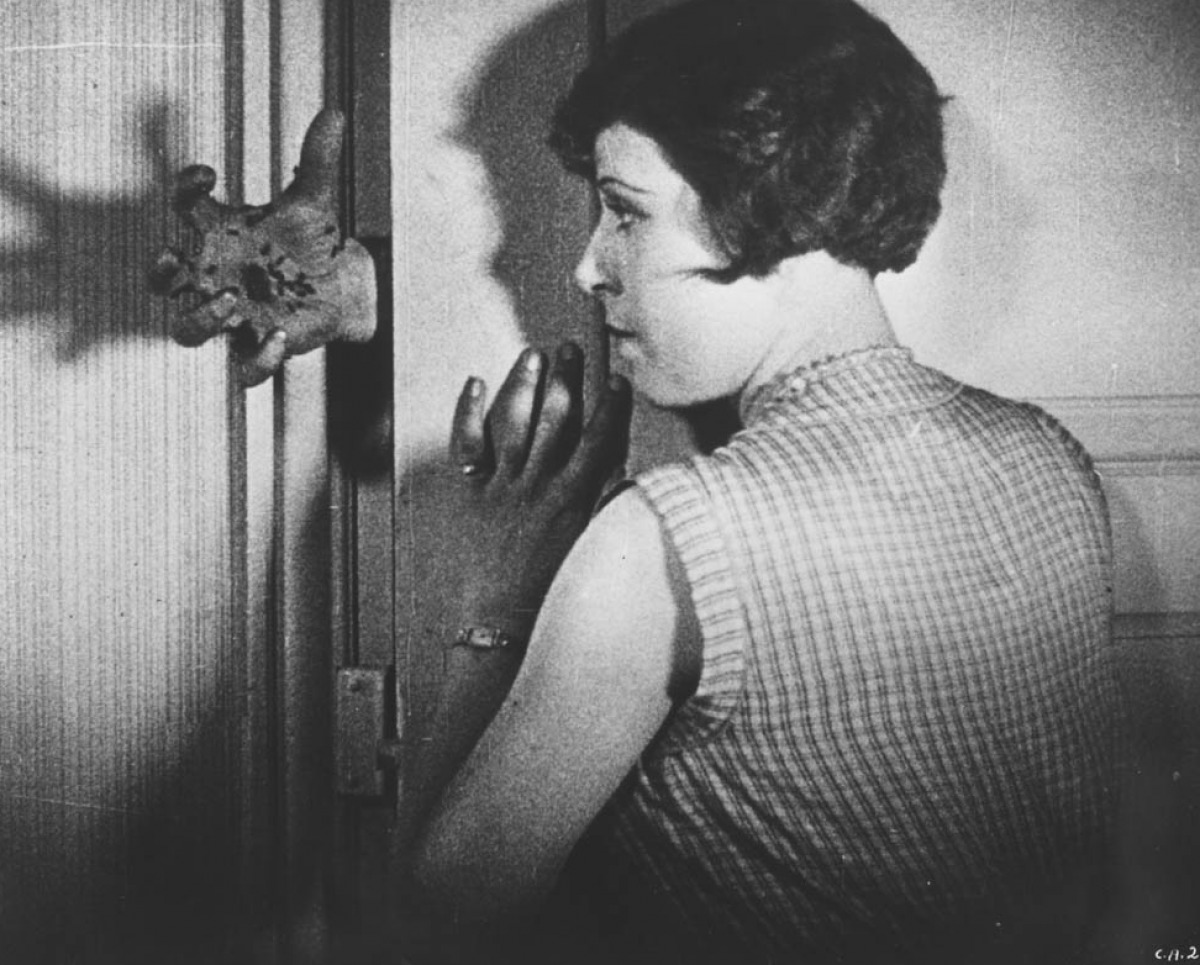
When Dalí moved to Madrid in 1922, he lived in a student’s residence where he met Luis Buñuel (who at the time was studying philosophy). From then on the two developed a close friendship and one day, while working as an assistant to French silent master Jean Epstein, Buñuel told Dalí about a strange dream he had had evolving a razor blade slicing through an eye to which the artist responded with a strange dream of his own evolving ants and a hand.
Soon thereafter, the two decided to collaborate on a film, that explored the subjugated feelings and ideas of the human mind. Buñuel stated that “Nothing, in the film, symbolizes anything. The only method of investigation of the symbols would be, perhaps, psychoanalysis.”
The film was presented at the Studio des Ursulines in 1929 alongside Man Ray’s “The Mysteries of the Château de De”.
2. Menjant Garotes (1930, Luis Buñuel)
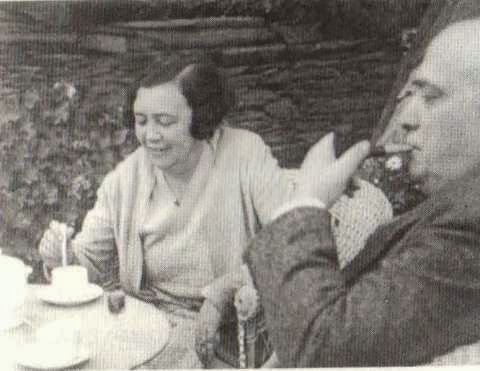
In 1988, a group of people visited Dalí’s sister at her house in the hopes of doing a piece about Dalí to include in a future TV series about Spanish surrealist artists. They were surprised when Ana María told them about the existence of a short film made by Luis Buñuel during the time when he was looking for shooting locations for “L’âge d’or”. It was a documentary on Dalí’s family featuring Dalí himself shot in April 1930.
The film is a sort of home movie that displays a certain experimental character and it probably served as a basis for Buñuel’s later documentary centered on the Spanish region Las Hurdes – “Land without Bread” (1933).
3. L’âge d’or (1930, Luis Buñuel)
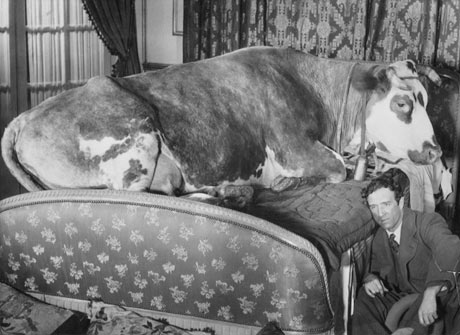
The last Buñuel – Dalí collaboration on this list is “L’âge d’or”, a surrealist film centered on a couple trying to consummate their romantic drive while being continuously held back by the bourgeois society surrounding them and their respective values.
While “Un Chien Andalou” serves an exploration of the human subconscious, “L’âge d’or” can be seen as an exploration of the human conscience and the bizarre images it presents as a sign of revolutionary thinking while directly commenting on the excesses and absent morals of society itself.
4. Fantasia (1940, Various Directors)
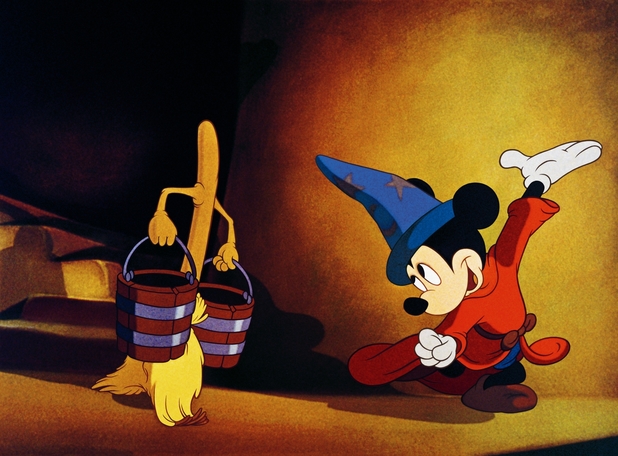
Even though the original idea for “Fantasia” happened during a dinner between Walt Disney and conductor Leopold Stokowski, for years there has been speculation that this film was also ‘touched’ by the Spanish artist.
It is known that Dalí made several illustrations for “Fantasia” and that some of those were turned down, however, Disney’s working process evolved a serious amount of secrecy and it has never been clear if besides other direct collaborations like “Destino”, the Spanish artist and the American director didn’t share ideas or thoughts on other projects.
The original idea for “Fantasia” revolved around the character of Mickey Mouse bringing to life a piece of classical music. However, it became an experimental film featuring eight classical music compositions accompanied by surrealist choreographed animation.
It is known that Dalí became acquainted with Disney sometime around 1937/1938 so it can also be speculated if the artist had any influence in Dumbo (1941), specifically in the pink elephant’s sequence and later on The Three Caballeros (1945). Who knows.
5. Moontide (1942, Archie Mayo and Fritz Lang)
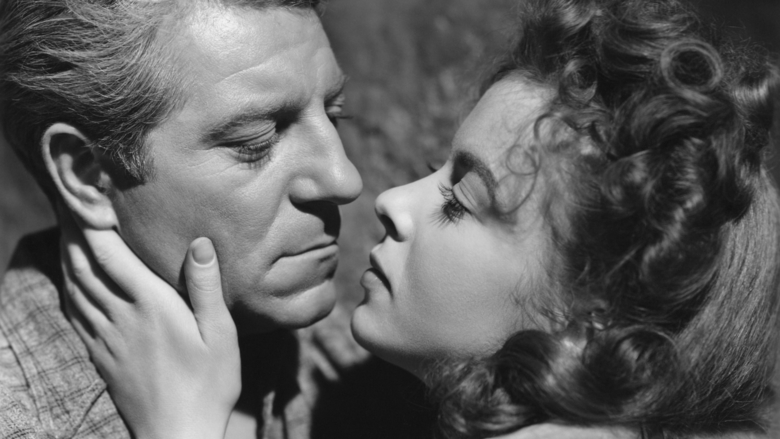
“Moontide” tells the story of Bobo, a man who fears having killed someone during a fight, and Anna, a woman saved by Bobo when she tried to killed herself, as they developed a romantic relationship and face the opposition of Tiny, Bobo’s longtime friend.
According to the records Twentieth Century-Fox had on this film they had hired Salvador Dalí to design Bobo’s dream sequence which happens when he is drunk. According to this source of information, Dalí created three paintings and five sketches that were used in the film. When watching the dream sequence one cannot deny that it features elements close to Dalí’s affections such as a watch.
6. Spellbound (1945, Alfred Hitchcock)
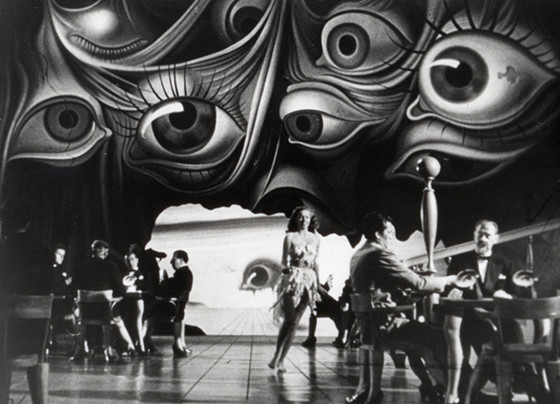
Another famous dream sequence designed by the Spanish artist is featured in Alfred Hitchcock’s “Spellbound”. This film explores the relationship between a psychiatrist, portrayed by Ingrid Bergman, who protects a patient named John, portrayed by Gregory Peck, accused of murder as both experiment several methods in order to help him remember the crucial moment when the death of the man John is accused of murdering happened.
Because this particular dream sequence had a need for images that explored what human conscience can repress and therefore diving into the psychoanalytic world, Dalí was hired by the Selznick International Pictures to specifically come up with that sort of imagery. Which he did, remarkably well.
Originally Dalí’s ideas included a scene shot in a ballroom with hanging pianos in which Dr. Peterson (Bergman’s character) turns into one of the still figures that crowd the room pretending to be dancing. Reportedly, this idea was excluded due to the difficulties, mainly monetary, of building this sort of set and also because the production was already late.
On working in “Spellbound” Dalí stated “I wanted to convey the dream with great visual sharpness and clarity–sharper than film itself”.
7. Father of the Bride (1950, Vincente Minnelli)
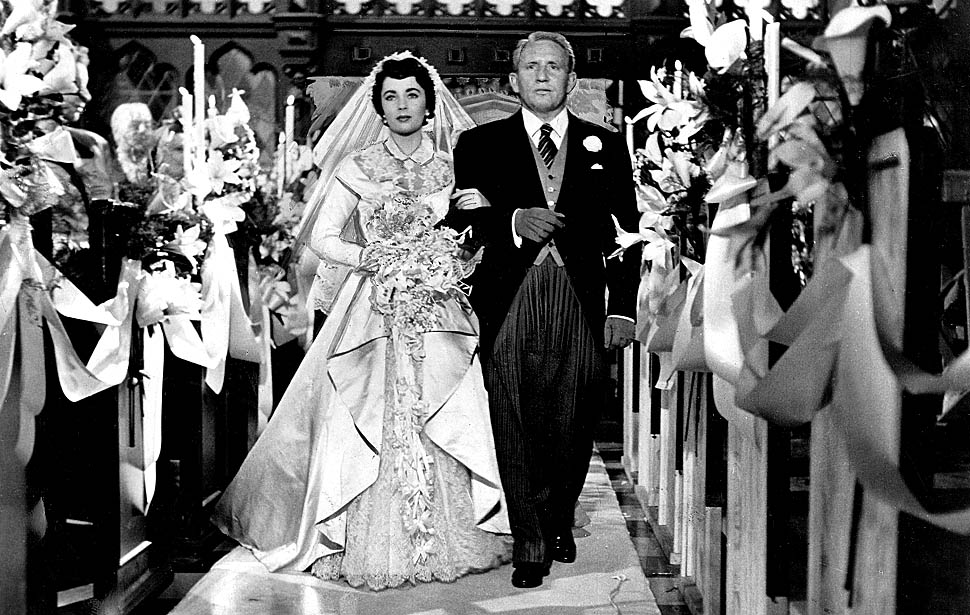
Hollywood came calling the services of the Spanish surrealist artist yet in another situation, Vincente Minnelli’s “Father of the Bride”.
This comedy stars Spencer Tracy in the role of a family father who lives a roller coast of emotions once his young daughter (Elizabeth Taylor) prepares herself for marriage. A ceremony he has to help organizing.
And also in this film Dalí’s participation was required to design the dream sequence. It was the last effort of the Spanish artist in great Hollywood productions since he then moved back to Spain. However, there are accounts that Dalí had started to work on another idea for a film with the Marx Brothers titled “Giraffes on Horseback Salad” which, if made, would include “a scene of giraffes wearing gas masks and one of Chico sporting a deep-diving suit while playing the piano.”